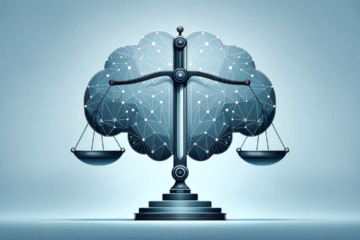
This article is written by Vandna Singh of 3rd Semester of Kazi Nazrul University, an intern under Legal Vidhiya
ABSTRACT
India stands as a prominent example of secularism, largely due to the solid groundwork established by its founding fathers. Although the principle of secularism is deeply entrenched in India, it only became a formal part of the Constitution following the 42nd Amendment. The journey of secularism within the Indian Constitution has been extensive since India embraced republicanism. From landmark judgments to contentious incidents, the notion of secularism has been frequently invoked and debated by leaders over the years, revealing its many complex layers. Notably, the Indian interpretation of secularism differs from that of the Western world. This article explores the nuances surrounding the concept of secularism in the context of the Indian Constitution.
KEYWORDS
Secularism, Din-i-Ilahi, Dhamma, Sulh-i-Kul and Sarva Dharma Sambhava.
INTRODUCTION
Secularism refers to the separation of state and religious beliefs, where the state is obligated to treat all individuals equitably. India’s secular roots are deeply embedded in its history and trace back centuries. The nation’s cultural diversity and tolerance for various beliefs stem from long-standing values of coexistence among different communities. This concept is not new to India; it was championed by several prominent figures involved in the freedom struggle during the partition era, such as Mohandas Karamchand Gandhi and Sardar Bhagat Singh.
The idea of secularism became more prominent post-partition and is closely associated with India’s first Prime Minister, Pandit Jawaharlal Nehru. His endeavours to unify the nation immediately after partition, through the principle of secularism, laid a robust foundation for the country we now call home. India faced numerous challenges following the 1947 partition, the most significant of which was the divide in religious beliefs among people, a consequence of the British policy of “Phoot daalo aur raj karo.” From the surge in communal violence to enduring communal tensions, Nehru adeptly managed these issues by advocating brotherhood and secularism. Secularism remained and still continues to remain a fundamental principle in the republic, serving as one of the core pillars of Indian democracy.
The country has continued to uphold and embrace its diverse beliefs, largely due to Nehru’s teachings. While India has long been a secular nation with a variety of social and religious beliefs, the term “secular” was formally incorporated into the Constitution with the 42nd Amendment Act under the leadership of former Prime Minister Indira Gandhi. Before this concept was officially embedded in the Constitution, several debates took place in the Constituent Assembly post-partition during the drafting of the Constitution. Although key leaders like Nehru and Dr. B.R. Ambedkar possessed liberal and secular ideologies, they were also cautious, believing that secularism could later be exploited for political gains.
HISTORICAL BACKGROUND OF SECULARISM
George Jacob Holyoake, known as the father of secularism and a British social reformer, was among the first to use the word “secular” and give it a modern and philosophical meaning. Interestingly, he was an agnostic. He focused on recognizing and respecting beliefs rather than rejecting them and closely linked the idea of secularism to “humanism.”[1]
The concept of secularism dates back to the Greek era. However, it was not widely practiced at that time, as most philosophers strictly adhered to various religious practices. The concept of secularism gradually spread from Greece to various European countries and later reached Asian nations.
When discussing the concept of secularism, Turkey and India are invariably mentioned. Turkey stands as the only Muslim-majority country that is secular, while India is known for having one of the highest levels of diversity. India is deeply rooted in various practices, cultures, and religious beliefs, with the saying that every household in India practices something different from the next.
Although Jawaharlal Nehru, India’s first Prime Minister, is often regarded as the father of secularism in India, both he and B.R. Ambedkar, the principal architect of the Constitution and chairman of its drafting committee, were among the first to oppose the term’s inclusion when it was initially introduced in Parliament. Both Nehru and Ambedkar were liberals, but they believed that the terms “secular” and “socialist” should not define India.[2]
Jawaharlal Nehru believed that the term “secular” could become a source of dogma, be easily manipulated or tampered with. He was concerned that if this term were included in the Constitution, it could be misused. Nehru envisioned a nation and its people free from such rigid ideologies. He had also advised V.K. Krishna Menon, who drafted the Preamble, to “go a little slow” on incorporating these two words. This did not mean that Nehru wasn’t a liberal or a socialist; he was one of the earliest advocates for harmonious living among people of different religions. He was evidently a liberal.[3]
B.R. Ambedkar remains one of the most significant figures in Indian history, largely due to his unwavering commitment to a just and equal nation. Given his ideals, one might wonder why he would oppose the concept of secularism. Ambedkar shared the same vision as Nehru for the country—a free nation with free ideas. He believed there was no need to explicitly introduce the concept of secularism since the Constitution as a whole was founded on principles of equal rights, including non-discrimination based on religious beliefs. Regarding the inclusion of the word “socialist,” he argued that India could not be considered a democratic country if its Constitution dictated “what kind of society” its citizens should live in. [4]
Although these terms were debated in Parliament long ago, they were not initially included. Hence, the words ‘secular’ and ‘socialist’ did not see the light of day initially. They were later added to the Indian Constitution by the former Prime Minister of India, Indira Gandhi in 1976.
Although the concept of secularism was briefly discussed after independence, pre-independence India also exhibited various forms of secularism through different ways. It seems as if secularism is deeply ingrained in India. During the British Raj, the policy of “divide and rule” was employed, but they still acknowledged the significance of allowing people to follow their own religions by introducing personal laws.
Even under Mughal rule, there were numerous instances of promoting harmony across different religions. Akbar, the founder of the “Din-i-Ilahi” concept, firmly believed in the importance of different religions coexisting. He treated everyone with respect, regardless of their religious beliefs or identities, and supported the construction of various different religious structures. Akbar eliminated the poll tax on non-Muslims and ended the longstanding practice of forcibly converting prisoners of war to Islam. It is even said that Akbar was deeply saddened by the death of his rival, Maharana Pratap Singh. He adhered to the principle of “Sulh-i-Kul,” an Arabic term meaning “peace with all,” and Din-i-Ilahi was established based on this concept, incorporating common principles from various religions.[5]
Ashoka, a significant and a prominent figure in Indian history, adhered to the principles of his “Dhamma,” a core concept in Buddhism meaning “to uphold.” The central idea of his Dhamma was the capacity for people to live peacefully and harmoniously with one another. In fact, he was one of the first major emperor to declare, as early as the third century B.C., that the state would not prosecute any religious sect.
The aforementioned examples demonstrate that India has consistently adhered to the principle of secularism throughout various historical periods.
SECULARISM AND THE CONSTITUTION OF INDIA
As previously noted, the concept of secularism was introduced into the Indian Constitution by the former Prime Minister of India, Indira Gandhi, in the year 1976 during the Emergency era. The 42nd Amendment to the Constitution added three new words: “Socialist,” “Secular,” and “Integrity.”
Secularism, in the context of our Constitution, is understood as the separation of the government or those in power from their religious perspectives. The state is required to treat all religions and religious beliefs equally. This implies the following principles:
- The state must not be or act biased toward, favor, or follow any particular religion.
- It awards the citizens of India the right to practice, profess, and propagate any religion.
- The state has absolutely no authority or say over individuals’ freedom of belief and cannot impose or restrict one to follow any religion.
- The state cannot have an official religion and must remain fair, just and impartial to all individuals, regardless of their religious beliefs.
- The state is obligated to ensure that all individuals are equal before the law and are ensured protection under these laws irrespective of their religious beliefs or identities.
- All those in power are obligated to refrain from endorsing any religion or acting with bias toward any religion.
The following are constitutional provisions that reflect the aforementioned principles:
- Article 14: Grants the right to equality and equal protection before the law.[6]
- Article 16(1): Article 16 (1) ensures that all individuals, irrespective of their religious beliefs, caste, sex, descent and place of birth are provided with equal opportunities to public employment. It also reestablishes that there would be no discrimination.[7]
- Article 25: Provides “freedom of conscience,” allowing individuals the right to propagate, profess, and practice the religion of their choice.[8]
- Article 26: Grants the citizens the freedom to establish and manage religious or charitable institutions. They are also granted the permission to manage their affairs in matters of religion.[9]
- Article 27: Prohibits the state and those in power from compelling anyone to pay taxes for the maintenance or promotion of any religion or religious institutions.[10]
- Article 28: Permits schools and educational institutions maintained by religious groups to spread religious teachings.[11]
- Articles 29 and 30: Ensure cultural and educational rights for all, regardless of their religious beliefs or identities.[12]
- Article 51 (A) (e): Promotes the concept of brotherhood and obliges the citizens to live in harmony with each other.[13]
- 42nd Constitutional Amendment Act, 1976: The term “Secular” was introduced into the Indian Constitution, signifying that India is a secular nation.
KEY LANDMARK CASES AND IMPORTANT JUDGEMENTS
Over time, the concept of secularism in India has significantly evolved. Judicial decisions and judgments on various important cases have played a crucial role in this evolution. Here are a few key landmark judgments:
- S.R. Bommai v. Union of India, 1994[14]
This nine-judge bench Supreme Court case dealt with Article 356 of the Constitution, which concerns the imposition of President’s Rule in the event of a state emergency. While adjudicating this case, the Supreme Court also defined the concept of secularism. The Court held that secularism is an essential feature of the Constitution, ensuring the freedom of any religious belief. The state must remain neutral and unbiased toward every individual, and religion must not influence the state. Additionally, political parties cannot align with or identify themselves with any religion. Any government that adopts policies contrary to this principle may face action under Article 356.
- Keshavanada Bharti Vs State of Kerala, 1973[15]
The largest bench Supreme Court case in India’s history, Keshavananda Bharti v. State of Kerala, 1973, addressed the basic structure doctrine of the Constitution. The Court ruled that the Constitution could be amended as long as such amendments do not alter its basic structure. It was also held that secularism is one of the Constitution’s basic features, as its a fundamental right. It must remain unchanged and can’t altered.
- S.P. Mittal vs. Union of India, 1983[16]
In this case, Article 14, among others, was deemed to be violated. The Court ruled that those in power cannot engage in religious activities while officially on duty. The Apex Court also held that government officials cannot use public funds for such religious activities. These actions were declared unconstitutional.
- M. Ismail Faruqui vs. Union of India, 1994[17]
This five-judge bench case addressed the issue of the state’s acquisition of religious places. The Apex Court held that the acquisition of a religious place by the state or government does not violate the right to freedom of practicing any religion, as long as appropriate compensation is provided.
- Bijoe Emmanuel v. State of Kerala, 1987[18]
The “National Anthem Case” is a landmark case involving three students who refused to sing the national anthem on religious grounds. The Apex Court ruled that Article 19(1)(a) and Article 25 are not infringed in cases where the grounds are based on disrespect towards the national anthem. The Constitution emphasizes the principle of tolerance.
CRITICISM OF SECULARISM IN INDIA
The concept of “Foot dalo aur raj karo” or “divide and rule” was used by the British colonizers to maintain control over India through manipulation and division. While India’s concept of brotherhood has deep roots, the legacy of the British “divide and rule” strategy continues to impact the country. This nation continues to pay a hefty price as a result of the same. Secularism, which is intended to promote equity regardless of social beliefs and backgrounds, has faced significant backlash and criticism over the past 77 years since independence. This criticism often stems from lingering colonial-era mindsets and the continued use of divide-and-rule tactics by those in power for political gain. This approach has contributed to a rise in communal violence and violence against marginalized communities, perpetuated by some leaders who exploit the divide-and-rule strategy for their own benefit. From the rise in mob lynchings of minorities to discrimination, the concept of secularism seems to be undermined in India due to these issues. The framework of secularism is also often adopted by the people in power for political purposes rather than to foster genuine interfaith harmony. The Supreme Court in the Keshavananda Bharati v. State of Kerala case (1973) affirmed that secularism is a fundamental feature of the Constitution, which means it can be amended but cannot be altered fundamentally. Secularism remains a core principle of our Constitution for a reason. It is important to take pride in one’s culture and beliefs while respecting others. Tolerance, a key aspect of secularism, highlights the ability to coexist despite our differences, making India’s secularism unique and vital. Upholding these values is crucial.
CONCLUSION
The concept of secularism in India is rooted in “Sarva Dharma Sambhava,” a principle associated with Mahatma Gandhi’s teachings. The literal translation of Sarva Dharma Sambhava is “all dharmas are equal.” While India stands as a prime example of this concept, it is no news that this concept is slowly being uprooted. It is genuinely troubling to see a cherished principle that has been upheld for centuries slowly diminishing.
In a country like India, where cultures are as diverse as its cuisine, it is crucial to uphold the principles of secularism and its practices. History serves as a testament that those in power have often misused or attempted to alter this concept to create divisions among people for their own political benefits. From the British Raj to the present day, various political parties have tried to undermine secularism. It is essential not only to preserve this concept for these reasons but also as a responsibility of every Indian citizen. Our freedom was achieved through the spirit of brotherhood and unity. If we had been divided by religious beliefs, caste, and other factors, it would have been much more challenging to attain freedom and live in the beautiful nation that we now call home.
The law must ensure that no person faces discrimination based on their religious beliefs. More importantly, citizens must recognize the significance of tolerance and the coexistence of diverse ideologies and religious beliefs.
In recent years, India has witnessed a rise in communal violence to the extent that such incidents have become commonplace. For a nation as diverse as India, it is crucial to uphold the values established by our forefathers. This country anchors its citizens regardless of their religious identities and beliefs. Anyone who attempts to dilute this concept should face strict penalties. We must adhere to the principle enshrined in our Constitution—that India is a sovereign, socialist, secular, and democratic republic, ensuring that all citizens are equal before the law.
[1] Muhammad Hayat Khan, An analysis of “The Principles of Secularism” of George Jacob Holyoake, 2019
[2] The Hindu, https://www.thehindu.com/news/national/Debates-show-why-Preamble’s-original-text-left-out-the-two-words/article60332943.ece, (last visited Sep. 8, 2024).
[3] The Hindu, https://www.thehindu.com/news/national/Debates-show-why-Preamble’s-original-text-left-out-the-two-words/article60332943.ece, (last visited Sep. 8, 2024).
[4] The Hindu, https://www.thehindu.com/news/national/Debates-show-why-Preamble’s-original-text-left-out-the-two-words/article60332943.ece, (last visited Sep. 8, 2024).
[5] Justin Smolin, Open Theology, 232, 2014
[6] INDIA CONST. art. 14
[7] INDIA CONST. art. 16, § 1
[8] INDIA CONST. art. 25
[9] INDIA CONST. art. 26
[10] INDIA CONST. art. 27
[11] INDIA CONST. art. 28
[12] INDIA CONST. art. 29 & 30
[13] INDIA CONST. art. 51, § A
[14] S.R. Bommai v. Union of India, 1994 ,1994 AIR 1918
[15] Kesavananda Bharati Sripadagalvaru … vs State Of Kerala And Anr, 1973, AIR 1973 SUPREME COURT 1461
[16] S.P. Mittal vs. Union of India, 1983, 1 1983 SCR (1) 729
[17] M. Ismail Faruqui vs. Union of India, 1994, AIR 1995 SC 605A
[18] Bijoe Emmanuel v. State of Kerala, 1987, 1987 AIR 748
Disclaimer: The materials provided herein are intended solely for informational purposes. Accessing or using the site or the materials does not establish an attorney-client relationship. The information presented on this site is not to be construed as legal or professional advice, and it should not be relied upon for such purposes or used as a substitute for advice from a licensed attorney in your state. Additionally, the viewpoint presented by the author is personal.




0 Comments